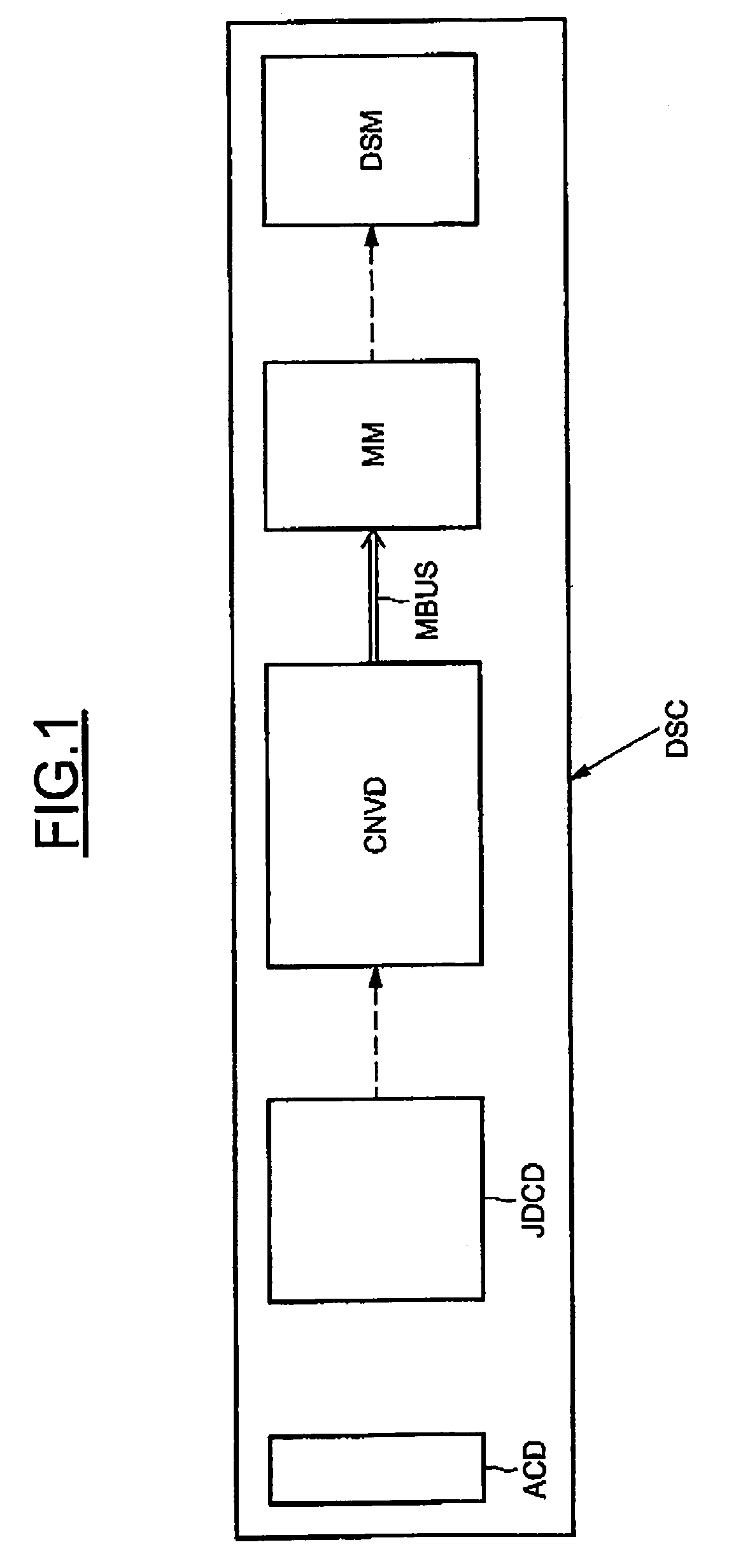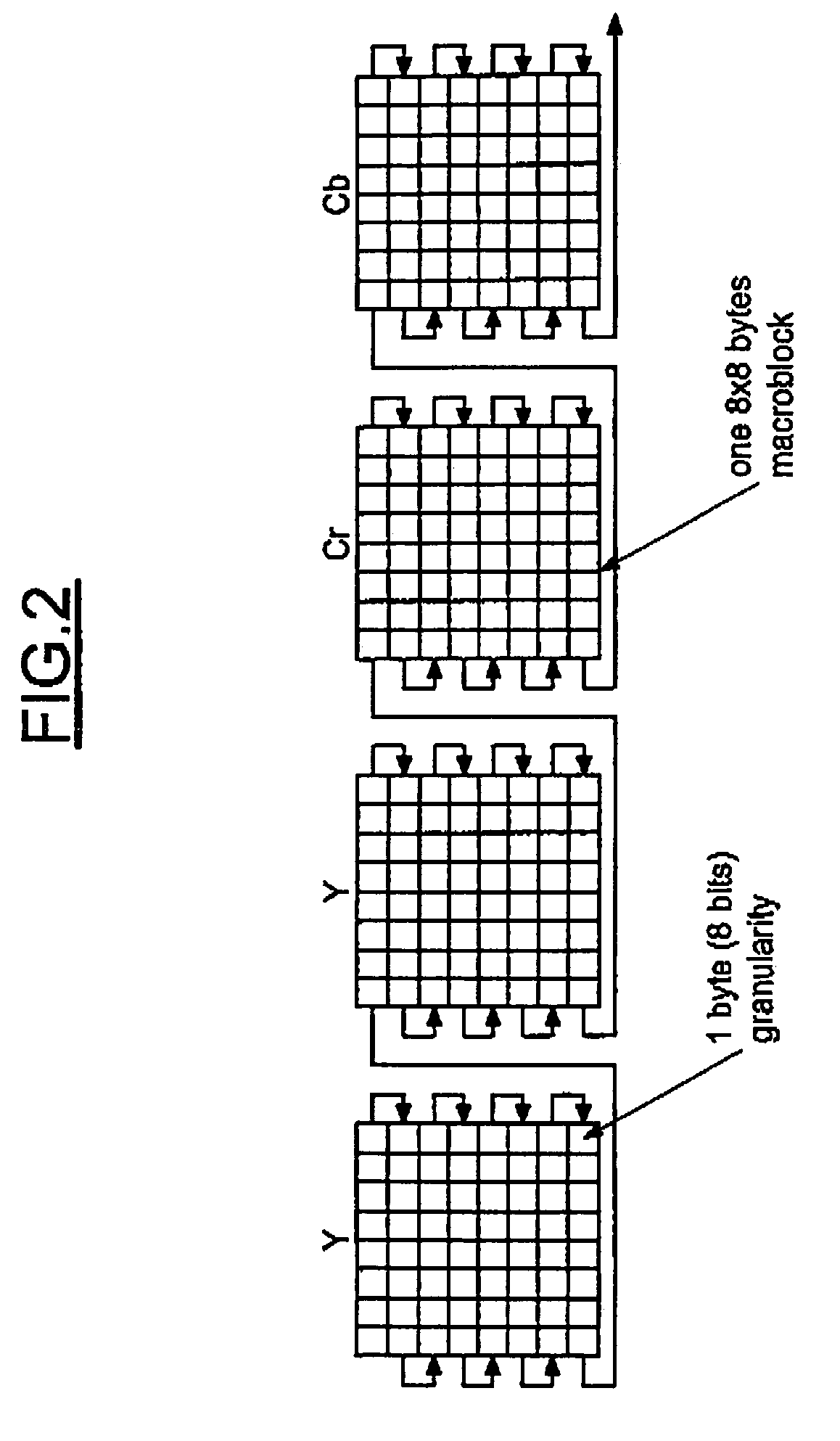Conversion device for performing a raster scan conversion between a JPEG decoder and an image memory
a conversion device and raster scan technology, applied in the field of image processing, can solve the problems of time-consuming, central processing unit real-time problems, and the inability to use macroblocks directly by the display functionality, so as to speed up the raster scan conversion and increase the memory access efficiency. , the effect of saving cpu tim
- Summary
- Abstract
- Description
- Claims
- Application Information
AI Technical Summary
Benefits of technology
Problems solved by technology
Method used
Image
Examples
Embodiment Construction
[0027]In FIG. 1, DSC designates a Digital Still Camera including an optical acquisition device ACD. A conventional JPEG decoder JDCD is responsible for reading encoded data in a memory (not represented in this figure) and converting the data into interleaved 8×8 macroblocks of the color components. A conversion device according to the invention CNVD is connected between the output of the JPEG decoder JDCD and an image memory MM and is adapted for performing a raster scan conversion between the JPEG decoder and the image memory MM which is adapted to contain the reconstructed final image to be displayed on a display module DSM.
[0028]Further, the image memory MM is connected to the output of the conversion device CNVD by a memory data bus MBUS which has a size, for example 16 bits, corresponding to the bandwidth of the image memory (i.e. the number of bits which can be written simultaneously in the image memory). As illustrated in FIG. 2, the JPEG decoder first generated two macrobloc...
PUM
 Login to View More
Login to View More Abstract
Description
Claims
Application Information
 Login to View More
Login to View More - R&D
- Intellectual Property
- Life Sciences
- Materials
- Tech Scout
- Unparalleled Data Quality
- Higher Quality Content
- 60% Fewer Hallucinations
Browse by: Latest US Patents, China's latest patents, Technical Efficacy Thesaurus, Application Domain, Technology Topic, Popular Technical Reports.
© 2025 PatSnap. All rights reserved.Legal|Privacy policy|Modern Slavery Act Transparency Statement|Sitemap|About US| Contact US: help@patsnap.com



